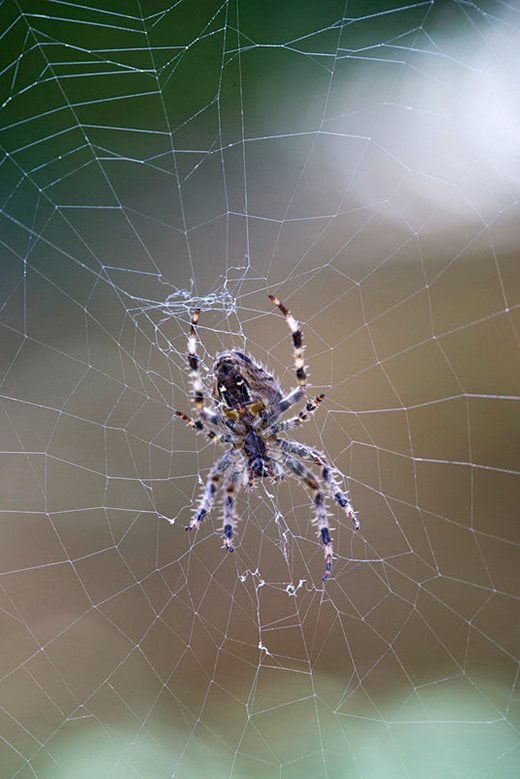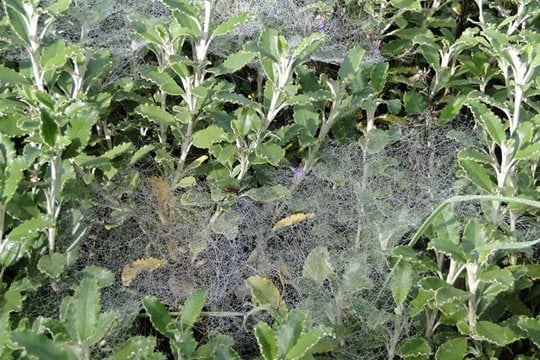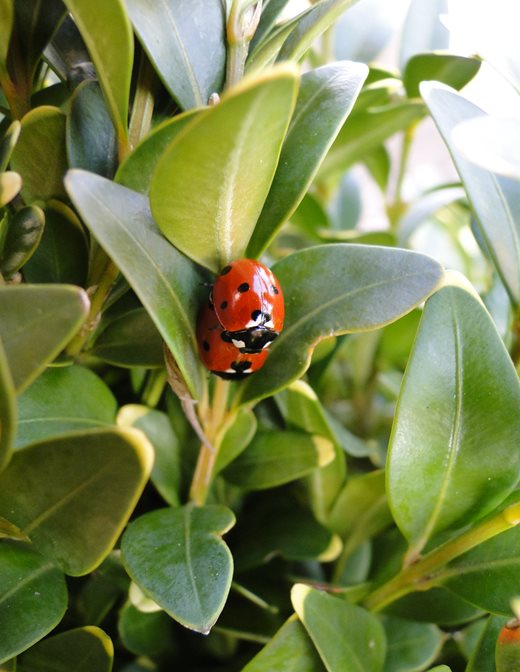The much-awaited second Plants for Bugs paper lifts the rug on bugs and shows a well-stocked border is important to garden ecology

The peer-review process took a little longer than hoped for with our second paper but at last we can announce the paper has been accepted and – just as importantly –
we’ve prepared some recommendations for home gardeners wanting to make practical use of the findings from our Plants for Bugs project.
The
paper, published earlier this summer in
Biodiversity and Conservation, was entitled “Enhancing gardens as habitats for plant-associated invertebrates: should we plant native or exotic species?” The keen among you might notice this is very close to the first paper’s title - “Enhancing gardens as habitats for pollinators: should we plant native or exotic species?” So how does it differ?

Well, the
first paper reported on insects that visited the flowers – generally termed ‘pollinators’. This is a popular group, covering honey bees, bumblebees, hoverflies and so on.
The second paper deals with a larger group of invertebrates – dataset = 23,000 individual specimens – that were sampled from the greenery (leaves and stems). Hence the term ‘plant-associated invertebrates’. If you can think of a catchier title, we’re all ears. These insects and other invertebrates fall into not one but four primary functional groups. A functional group is how the species are categorised within the ecosystem and is determined largely by what they feed on. So, instead of pollinators, here we were looking at the abundance of herbivores (plant-eaters), predators (animal-eaters), omnivores (plant and animal-eaters) and detritivores (organic matter-eaters or recyclers). Everything from caterpillars and aphids, to thrips, ladybirds, true bugs, spiders, earwigs and springtails.
Just a minute, you might say. Aside from ladybirds, why on earth would the average gardener be keen to maximise their plantings for the munchers and suckers and all manner of dubious creepy crawlies? It’s a valid point. But in response I offer two words: FOOD and CHAIN. Yup, the good old food chain is why.
 While some of these animals are traditionally regarded as pests by gardeners, they support populations of natural predators, which in turn help maintain a balance of invertebrates in general. They break down dead plant material and recycle nutrients. They can also provide food for garden birds and mammals such as hedgehogs. In short, an abundance of bugs of all types equates to healthy garden ecology.
While some of these animals are traditionally regarded as pests by gardeners, they support populations of natural predators, which in turn help maintain a balance of invertebrates in general. They break down dead plant material and recycle nutrients. They can also provide food for garden birds and mammals such as hedgehogs. In short, an abundance of bugs of all types equates to healthy garden ecology.
So, key messages from paper two;
- The best strategy for gardeners wanting to support plant-associated invertebrates is to plant a predominance of plants native to the UK.
- Even if you don’t have a lot of native plants in your garden, plant schemes that are based on plants native to the Northern hemisphere are likely to support only marginally fewer (less than 10%) invertebrates in some functional groups (including herbivores and some predators) than UK native plant schemes. And exotic plant schemes based on Southern hemisphere plants will still support a good number of invertebrates, albeit around 20% fewer than plants from the UK.
- Regardless of plant origin, the more densely your garden is planted or allowed to grow, the greater the abundance of invertebrates of all kinds (herbivores, predators, detritivores and omnivores) it will support.
And, if you as a gardener wish to translate what this means into the real world, follow these five simple actions;
- Include plenty of UK native plants
- Decide whether planting for pollinators is equally important to you
- Let your plants fill out
- Plant generously
- Be relaxed and tolerate some nibbled leaves
Is that it? Have we finished writing up the findings? By no means. Four years’ worth of data means there is still lots to explore. What about the pitfall traps? And species diversity? And putting it all together? And so, onto the next paper...
See also
Find out more about the Plants for Bugs project
Download interpretation bulletin two: Gardens as habitats for plant-dwelling invertebrates (2MB pdf).
RHS Plants for Bugs press release on invertebrates on the plants
RHS advice: Native and non-native plants for plant-dwelling invertebrates
Salisbury, A., Al-Beidh, S., Armitage, J., Bird, S., Bostock, H., Platoni, A., Tatchell, M, Thompson, K. and Perry, J. (2017). Enhancing gardens as habitats for plant-associated invertebrates: should we plant native or exotic species? Biodiversity and Conservation.

